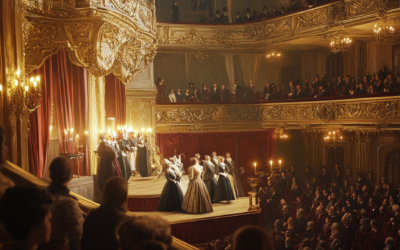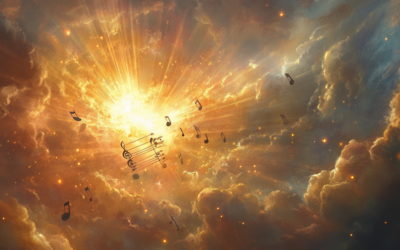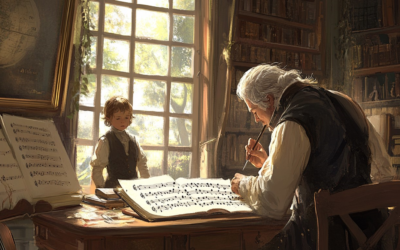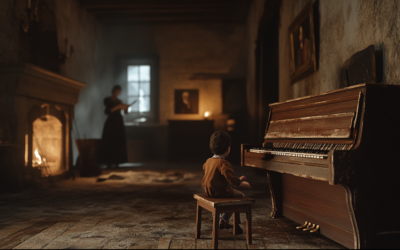The Contradictions Behind Mozart’s Bassoon Concerto K.191 and Other Puzzling Pieces
The Bassoon Concerto in B-flat Major, K.191 has long been celebrated as a foundational work for the bassoon, yet its origins remain shrouded in mystery. Originally thought to have been composed for Thaddäus Freiherr von Dürnitz, a Munich amateur bassoonist, closer examination reveals several inconsistencies in the timeline and purpose of the piece.
Coupled with the fragmented nature of the concerto’s movements, which appear disjointed and stylistically diverse, this raises questions about whether the work was intended for performance at all.
Furthermore, other works like the incomplete Bassoon Concerto in F Major, K.196d and the dubious Sonata for Bassoon and Cello, K.292a, are likely forgeries or falsely attributed to Mozart. As we revisit these compositions, it becomes increasingly clear that Mozart’s legacy is more complex and layered than previously believed.
Mozart: The Fall of the Gods
This book compiles the results of our studies on 18th-century music and Mozart, who has been revered for over two centuries as a deity. We dismantle the baseless cult of Mozart and strip away the clichés that falsely present him as a natural genius, revealing the contradictions in conventional biographies. In this work, divided into two parts, we identify and critically analyze several contradictory points in the vast Mozart bibliography. Each of the nearly 2,000 citations is meticulously sourced, allowing readers to verify the findings. This critical biography of Mozart emerges from these premises, addressing the numerous doubts raised by researchers.
""Is it truly Mozart, or merely a name we attach to what we find pleasing?"
Mozart: The Fall of the Gods
Mozart’s Bassoon Concerto in B-flat Major, K.191, often celebrated as a cornerstone of the bassoon repertoire, carries a murky history fraught with inconsistencies, much like his early violin concertos. Despite common belief, Mozart did not compose this concerto specifically for Thaddäus Freiherr von Dürnitz, an amateur bassoonist from Munich, as has been widely suggested. It was once thought that Mozart completed the piece on June 4, 1774, for Dürnitz, the same man for whom he later composed the Piano Sonata in D Major, K.284 in 1775. However, this timeline does not hold up under scrutiny.
Mozart only met Dürnitz at the end of 1774, after the bassoon concerto had already been written. Why, then, would Mozart dedicate a piano sonata to him instead of the already finished bassoon concerto? The letters between Mozart and his family make no mention of Dürnitz as a performer of the piece, nor is there any indication of another bassoonist friend who might have played it. This, in itself, raises doubts about the concerto’s original purpose and intended performer.
Musically, the Bassoon Concerto K.191 also presents contradictions. Mozart borrowed the opening theme from the Violin Concerto K.207, a work influenced by Josef Mysliveček, but the movements within K.191 feel disjointed. The first movement, with its Bohemian flavour, has a certain solidity, while the Andante is minimalist and restrained. The final movement appears to be a simple reworking of a basic dance form, creating an impression that the concerto may have been pieced together from various musical ideas, rather than crafted as a cohesive work. This leads to speculation that it may even be a sort of “pasticcio” rather than a unified composition.
Adding to the confusion is the existence of an incomplete Bassoon Concerto in F Major, K.196d, published by Breitkopf. The surviving fragment is so poorly suited to the bassoon that musicologists struggle to believe it was written by Mozart at all. Conversely, the Bassoon Concerto K.Anh.230a (K6 C 14.03), frequently attributed to Mozart, has fared better despite being the work of another composer—François Devienne. It is often performed as a “Mozart” piece simply because it is more aesthetically pleasing and commercially viable.
Around the same time as these dubious works, there is the Sonata for Bassoon and Cello (or Continuo), K.292a (K6 192c), another composition traditionally linked to Dürnitz. But, once again, there is no surviving autograph by Mozart, nor any concrete evidence tying it to him. The sole source for the sonata is a Breitkopf publication from 1805, known to be unreliable. Despite being included in Köchel’s catalogue, the sonata is almost certainly a forgery.
In these works, as in many aspects of Mozart’s legacy, we are left questioning both the authenticity and the true authorship. Whether driven by commercial interests or simply the lack of concrete evidence, many of these pieces remain attributed to Mozart, further muddying the waters of his already complex catalogue.
You May Also Like
The Vienna Disaster
The failure of La Finta Semplice in Vienna was a turning point for the Mozart family, revealing the cracks in the facade of Wolfgang’s prodigious reputation and prompting a desperate escape to Italy in search of redemption.
From Innsbruck to Bolzano
From Innsbruck to Bolzano, the Mozart family’s journey was a blend of strategic networking and missed opportunities, revealing the challenges of securing fame in 18th-century Europe.
The Myth of Mozart’s Sight-Reading Genius
Mozart’s so-called sight-reading miracles were less about supernatural talent and more about clever improvisation, as two key 18th-century witnesses make clear.
The Hidden Legacy of Michael Haydn
Mozart’s Symphony No. 37, K.444, is more Haydn than Mozart. How did this happen? A story of deception and misattribution unfolds.
The Myth of Mozart’s Education
For centuries, Wolfgang Amadeus Mozart has been celebrated as a musical prodigy, effortlessly composing masterpieces from a young age. However, when we peel back the layers of myth surrounding his early education, a different picture emerges—one in which his father, Leopold Mozart, plays a far more controlling and influential role than is often acknowledged. This article explores the true nature of Mozart’s education, examining how much of his early works can be attributed to his own genius, and how much was the product of his father’s meticulous and often self-serving guidance. Was Wolfgang’s brilliance entirely his own, or was it a crafted image designed by Leopold?
The Myth of Mozart’s Childhood
Mozart’s childhood is often romanticised, but behind the myth lies a more complex reality. This post explores the hidden dynamics within his family, questioning the traditional narrative of Mozart's early years and shedding light on the forgotten role of his sister,...







